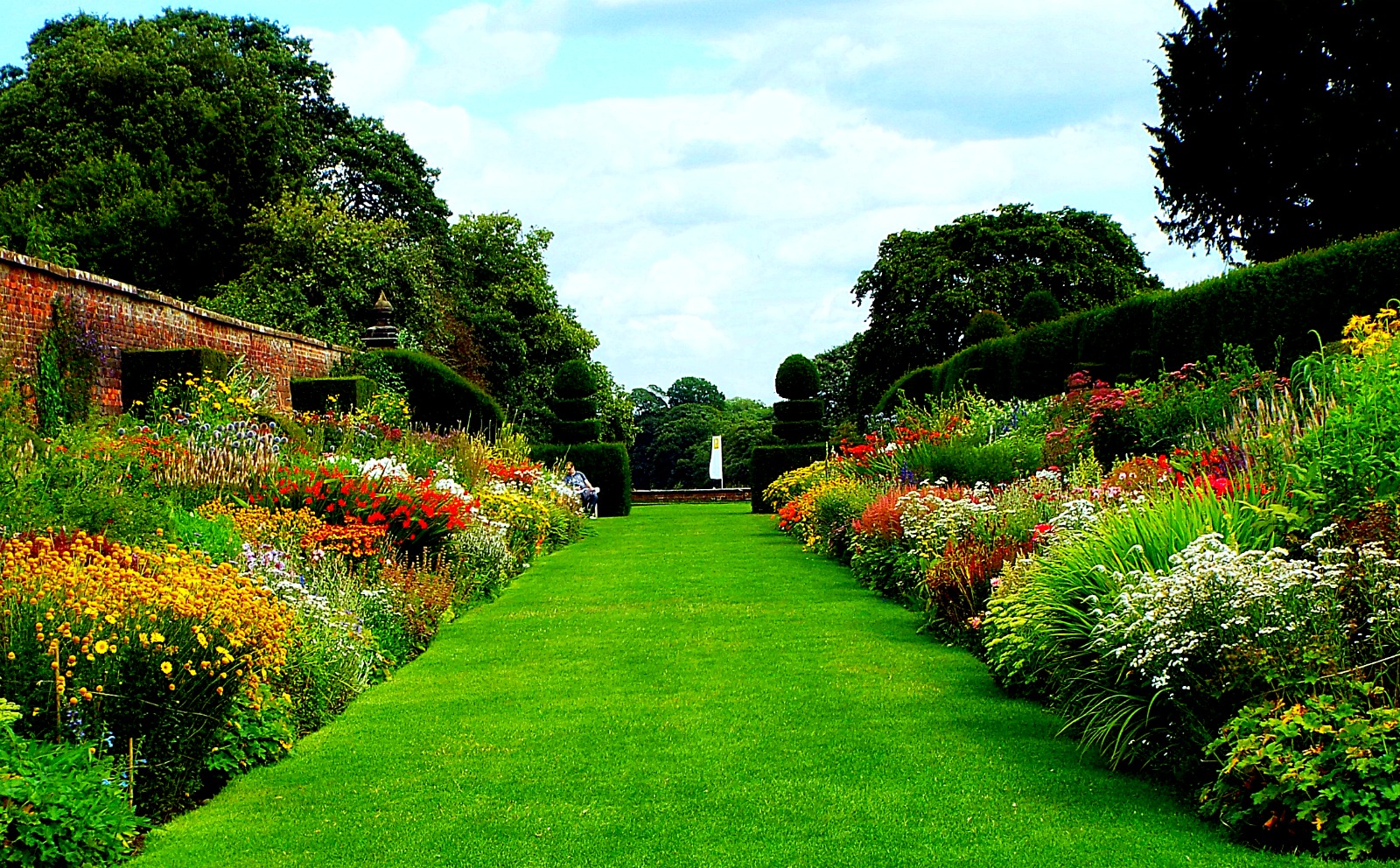“England hath contrived to make the adopted foreigners her own,” wrote American horticulturist, businessman and the co-author of the Cactus and Succulent Journal, Robert Henry Foster, of the plants obtained from around the world to fill such borders.
It is said the first herbaceous borders were designed at Arley Hall & Gardens in Cheshire, England, in 1845: “Amongst the finest in Europe the Gardens have been created over the last 250 years by successive generations of the same family.” In fact, right from the start they were always a reflection of a family or a person’s unique style, be it exuberant and colourful or quiet and constrained.
 Arley Hall & Gardens (Image by Phil Wilson for Unsplash)
Arley Hall & Gardens (Image by Phil Wilson for Unsplash)
However, all mixed borders follow a basic format: First, to best display the plants; to rise from the front in three tiers (the shortest plants at the front and the tallest further back); to exhibit variety and, foremost, to feature repetition. This repetition of grouping plants creates visual pleasure while calming the eye, all enhancing the beauty of mixed borders.
Colour is everything - from the “hot borders” (in bright orange or lavender) of British garden designer, landscape artist, journalist and TV presenter, Dan Pearson, to the White Garden of Sissinghurst by Vita Sackville-West, who wrote at the time: “All the same, I cannot help hoping that the great ghostly barn owl will sweep silently across a pale garden, next summer in the twilight - the pale garden that I am now planting, under the first flakes of snow.” The result was one-colour borders and gardens that are so singular of Sissinghurst.
 Sissinghurst Castle and Garden - The Famous White Garden (Image by Tony Hammond for Flickr)
Sissinghurst Castle and Garden - The Famous White Garden (Image by Tony Hammond for Flickr)
 Sissinghurst Castle and Garden (Image by Bob Radlinski for Flickr)
Sissinghurst Castle and Garden (Image by Bob Radlinski for Flickr)
And, in all successful cases, these borders are “held down” by a structure of sorts - a hedge or a wall - or repeated clipped balls or shapes. It is intricate work but infinitely rewarding.
Evergreen shrubs, perennial flowering plants, roses and seasonal bulbs are traditionally used in herbaceous borders. But in South Africa we can ring the changes with our amazing collection of indigenous plants.
I would advise a warmer palette, taking into account our climate and the selection of plants. I am thinking of clipped Tecomaria (Cape honeysuckle) or waterberry hedging for the structure; and intersperse the planting at repeated intervals with tall tree aloes (Aloe Barberae).
Then once the structure is in place, plant the shortest plants at the front: These can be Gazania, Arctotis, the shorter Pelargoniums, Felicia Amelloides, Nana White Agapanthus and the very pretty lilac Scabiosa. Smaller succulents such as a mass of Echeveria create a carpet of grey, and Barberton daisies add a dazzle of jewel colours.
 Agapanthus (Image Unsplash)
Agapanthus (Image Unsplash)
Then follow with medium-sized shrubs such as Dietes Grandiflora or the gentler pale yellow Dietes Bicolour, the vivid blue Aristea Capitata, grey sprawling Helichrysum Petiolare, and the taller Pelargonium Cucullatum. And for a wonderful addition, think about the white flowering Metalasia Muricata.
All the indigenous Salvias or the bright-yellow, daisy-like flowers of the Euryops Pectinatus would also add visual appeal; and so would the taller Agapanthus that gives beautiful splashes of colour in summer.
 Euryops Pectinatus (Image by Stefan for Unsplash)
Euryops Pectinatus (Image by Stefan for Unsplash)
Moving to the taller items, think the Kniphofia (red-hot pokers), winter-flowering pincushions and protea, the coral-coloured flowers of Bauhinia Galpinii (Pride of de Kaap) and gentle pale-yellow-flowering Gnidia. Any of the taller aloes (Aloe Ferox or Aloe Thraskii) give interesting structure and texture.
 Yellow kniphofia (Image by Manuel Torres for Unsplash)
Yellow kniphofia (Image by Manuel Torres for Unsplash)
Interpose the above layers with the gentle grasses such as Setaria, Aristida Junciformis, Melinis repens and Dierama and you have a beautiful flowering South African mixed border.
 Dierama (Image by David Clode for Unsplash)
Dierama (Image by David Clode for Unsplash)
Gardener and author of Growing and Using Lavender, Patricia (Patti) Barnett, wrote that “… Connections with gardens, even small ones, become windows to the inner life”.
Let your borders be a personal thing – whether quietly tasteful or delightfully quirky. DM/ML




 Dierama (Image by David Clode for Unsplash)
Dierama (Image by David Clode for Unsplash) 